Table of Contents
✔ Explore a comprehensive construction tools list for various construction fields. Find the right tools for your construction project, from hand tools to heavy machinery.
A. Introduction
✔ Tools and equipment are essential components in the construction industry for building, demolition, and excavation activities.
✔ These items range from simple hand tools like hammers, saws, and screwdrivers to heavy machinery like excavators, bulldozers, and cranes.
✔ The specific tools and equipment employed depend on the project’s size, complexity, and construction task. Accurate maintenance and function of these tools and equipment are vital for a successful construction project.
✔ Construction tools and equipment are used to build, maintain, and renovate structures. They can be hand-held, power-operated, or machine-operated.
I. Hand tools like hammers, saws, drills, and screwdrivers are used for cutting, fastening, and shaping materials.
II. Power tools like circular saws, table saws, miter saws, grinders, and sanders offer more power and efficiency than hand tools.
III. Machine-operated tools like bulldozers, excavators, cranes, and forklifts are used for heavy-duty construction tasks, such as earthmoving, lifting, and transporting materials.
B. 100+ Basic Construction Tools List
| Name | Image | Use |
| 1. Hammer |  | Used in general carpentry, framing, nail pulling, etc. |
| 2. Chisel |  | Used in woodwork, which must be helpful to remove the concrete bumps or excess concrete on the surface of the formwork. |
| 3. Plumb Bob |  | Used to check the verticality. |
| 4. Pick Axe |  | Used to excavate the soil. |
| 5. Measuring Tape |  | Used to measure masonry walls’ thickness, length, and widths, etc. |
| 6. Line and Pins |  | Utilized to level the alignment of the brick course while laying brick. |
| 7. Ladder |  | Used to climb on the roofs or higher places. |
| 8. Hoe |  | Used to dig the soil. |
| 9. Shovel |  | Used to dig and move soil. |
| 10. Float |  | Used to make the concrete surfaces smooth during construction. |
| 11. Gloves |  | Used to protect fingers from dust and chemicals. |
| 12. Measuring Box |  | Used to measure the amount of sand and aggregate utilized for making concrete. |
| 13. Measuring wheel |  | Used to measure distances or lengths. |
| 14. Polisher |  | Utilized to smoothen/polish the surface of tiles, woodwork, etc. |
| 15. Putty Knife |  | Used to apply putty on the surfaces to the desired thickness. |
| 16. Rubber Boots |  | Used to protect legs from direct contact with dust and chemicals. |
| 17. Earth Rammer |  | Used for leveling/compacting Surfaces. |
| 18. Mason’s Square |  | Used to gain a perfect right angle at the corner of the masonry wall. |
| 19. Scratchers |  | Used for creating designs or textures on surfaces. |
| 20. Sledge Hammer |  | Used when the ground is hard and contains rock layers. |
| 21. Trowel |  | Used for plastering and smoothing concrete surfaces. |
| 22. Spirit Level |  | Used to check the level of the ground, walls, etc. |
| 23. Straight Edge Brush |  | Used to paint the plastered surface. |
| 24. Vibrator | 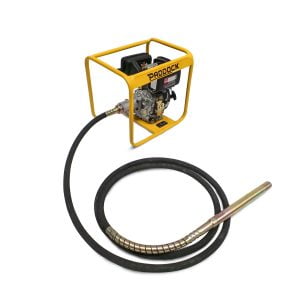 | Used to compact the concrete. |
| 25. Wedge |  | Used to cut the rock surfaces with the help of a sledgehammer. |
| 26. Wheel Barrow |  | Used to transport materials like cement, sand, concrete mix, etc. |
| 27. Tile Cutter |  | Used to cut tile. |
| 28. Sand Screen Machine |  | Used to screen the sand or fine aggregate before mixing it with concrete. |
| 29. Safety Glasses |  | To protect the eyes from dust, chemicals, etc. |
| 30. Safety Helmet |  | Used to protect the head from injury or any fatal accident. |
| 31. Rammer |  | Used for compressing or compacting the soil. |
| 32. Jack Plane |  | Used in the woodwork to smoothen the surface of the wood. |
| 33. Plumb Rule |  | Used to measure the vertical line of the wall, whether perfectly vertical or not. |
| 34. Head Pan |  | Commonly used in construction sites to carry materials. |
| 35. Hand Saw |  | Utilized to cut the wooden materials. |
| 36. End Frames |  | It supports the brickwork by leveling the alignment accurately. |
| 37. Digging Bar |  | Used to dig the soil surfaces. |
| 38. Drill Machine |  | Used to make holes in the walls, slabs, doors, window frames, etc. |
| 39. Concrete Mixer |  | Used to mix the ingredients for concrete preparation. |
| 40. Crowbar |  | Used for removing nails or to force apart two objects. |
| 41. Circular Saw |  | Used to cut the wood boards, frames, etc. |
| 42. Chain Lewis and Pin Lewis |  | Used to lift heavy stones |
| 43. Boning Rods |  | Used to level the dug trench throughout its length. |
| 44. Bump Cutter |  | Used to level and smoothen the concrete surfaces. |
| 45. Bull Dozer |  | used for shallow digging and ditching. |
| 46. Excavator |  | Used for Digging trenches and material handling. |
| 47. Backhoe |  | Used for various work such as transporting materials, excavation, etc. |
| 48. Graders |  | Used in the construction and maintenance of dirt roads. |
| 49. Loaders | 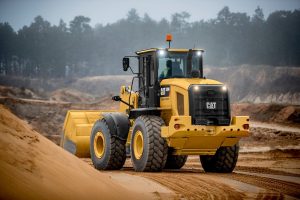 | Used for loading materials into trucks, laying pipes, etc. |
| 50. Cordless Drill | 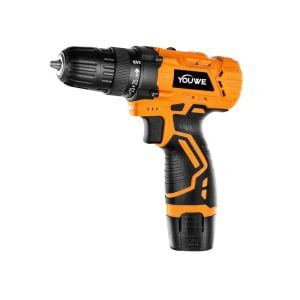 | Used to make pilot holes. |
| 51. Vacuum Blower |  | Used to clean the dust from the surfaces. |
| 52. Flat Pry Bar |  | Used for prying, scraping, and pulling. |
| 53. Binding Hook |  | Used for binding the steel on joints or junctions. |
| 54. Core Cutter Machine |  | Used to cut/drill cores of various concrete or bituminous pavement diameters. |
| 55. Dewatering Pump |  | Used to remove groundwater, or surface water, to lower the water table. |
| 56. Drilling Machine |  | Used to drill woods and metals. |
| 57. Dumpers |  | Used to transport materials to and from the construction site. |
| 58. Forklift |  | Used for loading and unloading materials from trucks and also for carrying goods. |
| 59. Framing Square |  | Used for laying out and marking patterns in framing, roofing, etc. |
| 60. Vibrating Table |  | Used to aid the compaction of materials in containers, boxes, and bulk bags |
| 61. Surface Vibrator |  | Used for compacting small slabs or horizontal surfaces. |
| 62. Shutter Vibrator |  | Used to consolidate the freshly poured foundation and the compact surface of precast concrete. |
| 63. Needle Vibrator |  | It is used for the proper compaction of concrete. |
| 64. Safety Belt |  | Used to protect workers from falling while working at heights. |
| 65. Tower Crane |  | Used for moving heavy goods, materials, or tools around a site |
| 66. Trenchers Cutter |  | Used to dig trenches. |
| 67. Rebound Hammer |  | Used to measure the hardness of concrete using the rebound principle. |
| 68. Road Roller | 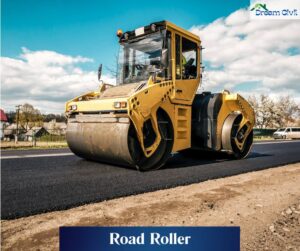 | Used to compact soil, gravel, concrete, or asphalt in constructing roads and foundations. |
| 69. Road Header Machine |  | Used to excavate roadways, tunnels, and compartments continuously without using volatile. |
| 70. Water Level |  | Used to determine the level spot of bricks during laying. |
| 71. Scoop |  | Used to collect cement, soil, etc. |
| 72. Hydra Crane |  | Used for loading, unloading, and transporting materials. |
| 73. Hoist |  | Used for lifting or lowering a load utilizing a drum or a chain. |
| 74. Flat Pry Bar |  | Used for prying, scraping, and pulling. |
| 75. Jack Plane |  | Used for dressing timber. |
| 76. Torpedo Level |  | Used to determine the surface level. |
| 77. Framing Hammer |  | Used for heavy carpentry work. |
| 78. Pile Driver |  | Used to drive piles into the soil to provide foundation support for buildings. |
| 79. Wrecking Ball Crane |  | Used to demolish large buildings. |
| 80. Pavers |  | Used to pave the road. |
| 81. Compactors |  | Used to compact the flexible pavements during construction. |
| 82. Feller Bunchers |  | Used in logging. |
| 83. Adjustable Wrench |  | Used to support or turn pipes or circular bars or nuts. |
| 84. Screwdrivers |  | Used for driving screws |
| 85. Pliers |  | Used to open or tighten nuts. |
| 86. Sod roller |  | Used to compact the ground. |
| 87. Wirecutter |  | Used to cut wires. |
| 88. Spanner |  | Used to tight screws, nuts, etc. |
| 89. Spokeshave |  | Used to provide the shape and smooth woods in woodworking. |
| 90. Clamp |  | Used for carpentry, woodworking, furniture making, welding, construction, and metalworking. |
| 91. File |  | Used to remove/smooth rough and sharp edges from cut metal |
| 92. Concrete Broom |  | Used to create a slip-resistant texture on the surface of the concrete. |
| 93. Brick Tongs |  | Used to carry several bricks at a time. |
| 94. Soil Probes |  | Used to check the soil condition/information. |
| 95. Theodolite |  | Used to measure horizontal and vertical angles. |
| 96. Total station |  | Used for measuring horizontal angles, vertical angles, and distance. |
| 97. Levelling |  | Used to measure the height of one level relative to another. |
| 98. Staff |  | It helps in collecting reading during the theodolite or level process. |
| 99. Pegs |  | To mark stations. |
| 100. Compass |  | To know the direction. |
| 101. Concrete Float |  | Used to finish concrete surfaces. |
| 102. Chain |  | Used to drag heavy equipment. |
| 103. Mortar Tubs and Stands |  | Used for mixing, dumping, and transporting construction material |
| 104. Utility Knife |  | Used to cut ropes, cardboard, etc. |
| 105. Arrows |  | Used to mark the boundaries and points. |
| 106. Broom |  | Used to clean concrete surfaces and plastered surfaces. |
C. Concreting – Construction Tools List
| Names | Images | Uses |
| 1. Trowel |  | Used to smooth concrete surfaces. |
| 2. Spackle Knife |  | Used for scraping surfaces or spreading material such as plaster or concrete in various construction trades. |
| 3. Spirit Level |  | Used to indicate how parallel (level) or perpendicular (plumb) a surface is relative to the earth. |
| 4. Straight edge |  | Used for making the concrete surfaces smooth and uniform. |
| 5. Float |  | Used for making the concrete surface smooth and flat. |
| 6. Plumb bob |  | Used to establish a vertical reference (called a plumb line). |
| 7. Floating Rule |  | Used to check the concrete surface level between successive layers ( E.g., rigid pavement). |
| 8. Paddle Mixer |  | Used ideally for quick and convenient mixing of materials. |
| 9. Hammer |  | Used in breaking concrete ( mainly while providing construction joints ). |
| 10. Tube Level |  | Used to transfer a vertical level across a distance. |
| 11. Thread |  | Used for maintaining the level of the concrete. |
| 12. Bucket |  | Used to transport/carry concrete. |
| 13. Shovel |  | Used to mix the cement, sand, aggregate, and water. |
| 14. Workboots |  | Used for protection of feet. |
| 15. Safety Glasses |  | Used as a shield to protect the eyes from any foreign debris that may cause irritation or injury. |
| 16. Digging Bars |  | Used for breaking up clay, concrete, frozen ground, and other hard materials, moving or breaking up tree roots and obstacles, and making holes in the ground for fence posts. |
| 17. Vibrators |  | Used to eliminate air pockets that can remain when pouring concrete that can ruin the integrity of the concrete. |
| 18. Vapour Retarders | 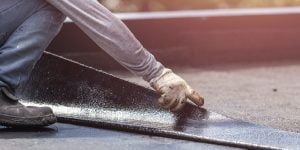 | Used to accomplish water vapor diffusion and air movement control with one material. |
D. Excavating – Construction Tools List
I. Hand Tools list
| Names | Images | Uses |
| 1. Spade |  | Used for digging straight-edged holes or trenches, slicing and lifting sod, and edging flower beds or lawns. |
| 2. Shovel |  | Used to dig as well as to move loose materials. |
| 3. Hoe |  | Used in gardening and horticulture to loosen soil and chop weeds. |
| 4. Trowel |  | Used for digging small holes or removing weeds. |
| 5. Rake |  | Used before excavating the top, clear the leaves and dust on the surface. |
| 6. Pick Axe |  | Used for breaking up hard ground or rock. |
| 7. Mattock |  | Used for digging, prying, and chopping. |
| 8. Digging Bars |  | Used for breaking up clay, concrete, frozen ground, and other hard materials, moving or breaking up tree roots and obstacles, and making holes in the ground for fence posts. |
II. Machinery Tools list
| Names | Images | Uses |
| 9. Tracked Excavator |  | Used for digging, material handling, demolition, and open-pit mining. |
| 10. Wheeled Excavator |  | Used for scrapyard work, road work, material handling, waste handling |
| 11. Back Hoe Excavator |  | Used for light transportation of building materials, construction, small demolitions, excavation, etc. |
| 12. Bulldozer |  | Used for shallow digging and ditching. |
| 13. Dragline Excavators |  | Used for road, port construction, pond, and canal dredging, and as pile driving rigs. |
| 14. Trenchers |  | Used to dig trenches, especially for laying pipes or electrical cables, installing drainage, or preparing for trench warfare. |
E. Plastering – Construction Tools List
| Names | Images | Uses |
| 1. Trowel |  | Used for plastering and smoothing surfaces. |
| 2. Spackle Knife |  | Used for scraping surfaces or spreading material such as plaster in various construction trades. |
| 3. Spirit Level |  | Used to indicate how parallel (level) or perpendicular (plumb) a surface is relative to the earth. |
| 4. Straight edge |  | Used for ruling, cement render screeding, tiling, and as a general construction straight edge. |
| 5. Float |  | Used for making plaster smooth and flat. |
| 6. Plumb bob |  | Used to establish a vertical reference (called a plumb line). |
| 7. Floating Rule |  | Used to check the level of the plastered surface between the successive layers. |
| 8. Paddle Mixer |  | Used ideally for quick and convenient mixing of paint, plaster, and more. |
| 9. Hammer |  | Used to chip out chunks of plaster and to re-secure or remove problematic pieces of lath. |
| 10. Plaster Sponge |  | Used for providing a final coat and finishing touch on a plastered surface. |
| 11. Hawk |  | Used to carry mortar or plaster from the mixing table to the surface being worked on. |
| 12. Tube Level |  | Used to transfer a vertical level across a distance. |
| 13. Water Brush |  | Used during the final smoothing stage of your plaster job. |
| 14. Thread |  | Used for checking the level of plaster of different structures. |
| 15. Bucket |  | Used to transport/carry mortar. |
| 16. Broom |  | Used during the final smoothing stage of your plasterwork. |
| 17. Shovel |  | Used to mix the cement, sand, and water. |
F. Demolition – Construction Tools List
| Names | Images | Uses |
| 1. Sledge Hammer |  | Demolition of drywall, concrete, wood, etc. |
| 2. Crowbar |  | Used to open nailed wooden crates. |
| 3. Pliers |  | Used for gripping. |
| 4. Nail Puller |  | Used for pulling out nails, even if they are sunken into the wood. |
| 5. Demolition hammer |  | Used for the demolition of concrete and various structures |
| 6. Backhoe |  | Used to collapse the building walls. |
| 7. Mask |  | Used to stop dust particles from going inside the nose or mouth. |
| 8. Helmet |  | Used to protect the head. |
| 9. Gloves and Boots |  | Used to protect hands and legs. |
| 10. Glasses |  | Used to protect eyes from dust particles. |
| 11. Skid Steer Loaders |  | Used on demolition projects of a more significant scale. |
| 12. Excavator Wrecking Ball |  | Used for demolishing large/tall buildings. |
G. Tunnel Making – Construction Tools List
| Names | Images | Uses |
| 1. Roadheader |  | Used for excavating rock in mining and civil construction projects. |
| 2. Drilling Jumbo |  | Used in underground mining. |
| 3. Air Ventilator |  | Used for providing oxygen inside the tunnel. |
| 4. Crawler Haggloader |  | Used in excavating tunnel mining, mine engineering, and hydraulic engineering. |
| 5. Wheel Loader |  | Used for lifting almost anything, such as debris, gravel, soil, dirt, pallets, etc. |
| 6. Dumper |  | Used to transport materials to and from a construction site. |
| 7. Breaker |  | Used for breaking hard stones, rocks, and hard strata. |
| 8. Telehandler |  | Used in construction sites, allowing you to reach out and over obstacles, and are also majorly utilized in repair and maintenance. |
| 9. Batching Plant |  | Used for preparing large quantities of concrete. |
| 10. Transit-Mixer |  | Used to transport concrete mortar from a concrete batching plant. |
| 11. Shotcrete Machine |  | Used to line tunnel walls in mines, subways, and automobile tunnels. |
| 12. MAI Pump |  | Used for mixing cement primarily for grouting when drilling MAI anchors. |
| 13. Crawler Excavator |  | Used for digging trenches, holes, and foundations, as well as for handling materials, moving earth, demolition, dredging, etc. |
| 14. Total Station |  | Used in modern surveying. |
| 15. Crusher Plant |  | Used to reduce the size of rocks, stones, and ore. |
| Read Also: 27 Bathroom Accessories |
| Verified by: Er. Bipana Kshetri Puri |

